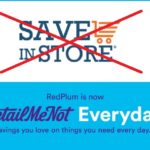
Even if we don’t think about it much, we all know that our loyalty card purchases are being tracked, and our coupon printing history is being recorded. Yet, it always seems a bit unsettling to learn precisely how marketers are collecting and using our data, and manipulating us into giving it to them – by, say, setting up an entire coupon website just for the purpose of extracting information from us.
Feeling a little like a lab rat yet?
You might be, if you’ve ever visited Kimberly-Clark’s “Pick Up the Values” printable coupon website. The site launched last fall, and word spread fast among coupon users and bloggers who were happy to find a new source of high-value printable coupons for Kimberly-Clark products like Huggies, Cottonelle, Kleenex and Kotex. What was originally set up as a short-term promotion, turned into an ongoing campaign featuring a monthly selection of coupons.
Kimberly-Clark representatives were positively giddy about the website at launch time. The site was set up “to simplify parents’ lives,” the company announced in a news release. “It’s very exciting!” Kimberly-Clark Brand Manager Lori Borchardt told Coupons in the News back in September.
And exciting it was – for Kimberly-Clark marketers, who wanted to watch exactly how we interacted with the website, what we did when we got there, what products we ended up buying, and what products they could push us to buy in the future.
“We wanted to acquire new consumers and you need to have data collection to go with that,” Kimberly-Clark consumer promotions manager Dan Kersten told a recent marketing conference. PickUpTheValues.com “has allowed us to capture a whole lot of data that we can mine for insights.” His comments were reported in the most recent edition of CPGMatters, an online newsletter for consumer packaged goods companies, and a co-sponsor of the LEAD Marketing Conference at which Kersten spoke.
Again, it’s no secret that a company would be collecting such data and watching our every move on their website. But pulling back the curtain on the process is a bit like watching sausage being made – it’s a little unseemly, even if the end result (coupons!) is appealing.
“A promotion analytics tool enables the marketer to provide targeted, timely offers to consumers based on purchasing behavior mined from the company’s PickUpTheValues.com consumer-facing digital coupon portal,” CPGMatters reported. “If consumers come to the portal for a specific brand, the company can track what other coupons they download and print for other brands within its portfolio.”
So if you come to the site by clicking on an offer for a specific brand, the company can see what additional coupons you end up printing for its other brands – and which you don’t. They’ll know if you visited the site and printed, say, a Huggies and a Pull-Ups coupon. And if you only redeemed the Huggies coupon, then maybe they need to push Pull-Ups on you a bit more aggressively to get you to buy it next time.
“We’re getting away from coupons as just a pricing lever,” Kersten said. “We are looking at them as a brand engagement mechanism, and being able to pull our brands together to be able to mine some of those insights.” The value, he said, is in the ability “to add that data component, and build that relationship with that consumer, versus ‘Here’s your coupon, go redeem it,’ which doesn’t tell us anything about that consumer.”
In order to print any coupons at all, you have to sign up on the site with your name, email address, age and zip code. The unique ID codes that appear on the coupons you print after logging in, means that every one you redeem is traceable back to you. So by using, or not using a coupon, accepting or not accepting an offer, you’re telling the company a lot about your own preferences – and what the company might need to do, in order to get you to buy more of its products.
“If a consumer only engages with one brand, and we are able to introduce these other brands to them that they may not have a purchase history of buying, we can do it with an offer that would incentivize them to try ours over the competitors,” said conference participant Randy Malluk of RevTrax, which powers the printable coupons that appear on the Kimberly-Clark site.
Some shoppers may find all of this helpful, others may consider it creepy. But “this idea of data isn’t going away and it is becoming more and more prevalent,” Kersten said.
Just a little something to think about the next time you visit a company’s website, or print a coupon. That website and coupon may be watching you – even more closely than you might have imagined.











I print most of my coupons from Swagbucks to get 10 Swagbucks per coupon redeemed. I also print coupons to give away or at least fill up the page I am printing. I love giving coupons away in the store, it makes my day and brightens another persons day as well. Nice to know that I am messing with coupon marketers and their data mining, now that made my day. 🙂